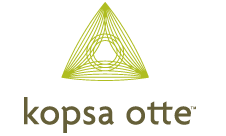In a result that surprised me, the Tax Court ruled that service providers at spa were booth renters not employees. In the past if the rent was not a fixed amount and if the service provider did not collect the cash, then they were considered employees. The Tax Court overlooked this precedence and ruled that the workers were booth renters.
Cheryl A. Mayfield Therapy Center, TC Memo 2010-239
The Tax Court has held that cosmetologists, nail technicians and massage therapists who performed services at a spa were not its employees but rather were independent contractors. Accordingly, the spa did not owe employment taxes and penalties as IRS had contended.
Upon audit the IRS determined that cosmetologists, nail technicians and massage therapists (collectively, service providers) who performed services at a spa in exchange for payments were employees of the spa.
• The service providers received no set salary or wages and no fringe benefits.
• As a general rule, the spa charged each service provider weekly “booth rent” equal to the greater of approximately $80 “base rent” or 25% of the gross revenues the service provider generated that week.
• The service providers set their own hours. Some of them worked full time; others were part-time workers who were students or had jobs elsewhere.
• The spa posted prices for various spa services on brochures and on its Internet site. But the service providers were not required to charge these posted prices; they often charged less and occasionally provided free services for repeat customers, family, and friends.
• Clients paid for services at a central point as they left the spa. The spa accepted payment by cash, check, gift certificate, or credit card.
• Cash payments were kept in a wicker basket beneath the receptionist's desk. When low on funds, a service provider would sometimes take money from the basket and leave a handwritten note.
• Service providers generally provided their own supplies. Each service provider purchased his or her own work clothing, which generally consisted of shirts with the spa logo and either khaki, black or white slacks or shorts.
• Each week the spa would prepare payout sheets for the service providers. These payout sheets listed each service provider's clients and the total amount that each client paid for services rendered. From these amounts the spa would deduct booth rent, expenses for products the service providers might have purchased from the spa, and any amount that the service provider might have taken from the basket money.
The spa did not file Forms W-2, Wage and Tax Statement, with respect to any individuals listed in the notices of determination. Nor did it report any compensation payments to employees during the years at issue on Forms 941, Employer's Quarterly Federal Tax Return, or Forms 940, Employer's Annual Federal Unemployment (FUTA) Tax Return.
In the notices of determination, IRS classified as employees the receptionists, massage therapists, cosmetologists and nail technicians who worked at the spa during 2002 through 2004 and an instructor who worked at the massage school during 2003 and 2004.
Spa prevails in Tax Court. Before the Tax Court, the spa conceded that the receptionists and instructor were employees but it argued that the massage therapists, cosmetologists and nail technicians were independent contractors. The Tax Court agreed. Although it was a close case, more factors supported a finding of independent contractor status than of employment status.
The following factors supported the spa's contention that the service providers were not employees:
• The spa generally did charge, and the service providers did generally pay, weekly rent of at least $80.
• The service providers were compensated on a straight commission basis, with no minimum guaranteed level of payment.
• The spa did not pay service providers' business or travel expenses.
• Many of the massage therapists made significant investments in outfitting and decorating their massage rooms. Thus, the service providers bore the risk of suffering net losses.
• Several service providers believed that they had a non employee relationship with the spa; and
• The spa did not tell the service providers how to provide their services to the clients. The service providers were all licensed professionals, possessing skills as required by their licensing. They set their own hours. Although the spa posted prices for various services, the service providers were free to charge less and sometimes provided services for free.
Other factors supported employment status for the service providers: their services were integrated into the spa's operations; they provided their services mostly on the spa's premises; the spa provided at least some informal training to new service providers; there was no showing that the service providers made their services available to the general public (other than by working at the spa) regularly and consistently; they were assisted in booking appointments and in receiving payments by receptionists that the spa employed and supervised; clients paid the spa rather than the service providers; and the spa kept the payments until it distributed the service providers' weekly checks.
Other factors were neutral. For example, the Tax Court regarded as neutral the fact that the service providers rendered their services personally since this was dictated by the nature of the services and the licensing requirements.
Bottom line. The Tax Court acknowledged that it was confronted with a close case. But weighing all the evidence, it concluded that factors indicating the service providers' autonomy predominated over those indicating the spa's control over them. Accordingly, it held that the service providers were independent contractors rather than employees.
To review the entire Tax Court Case see the attachment below.
To review the entire Tax Court Case see the attachment below.


